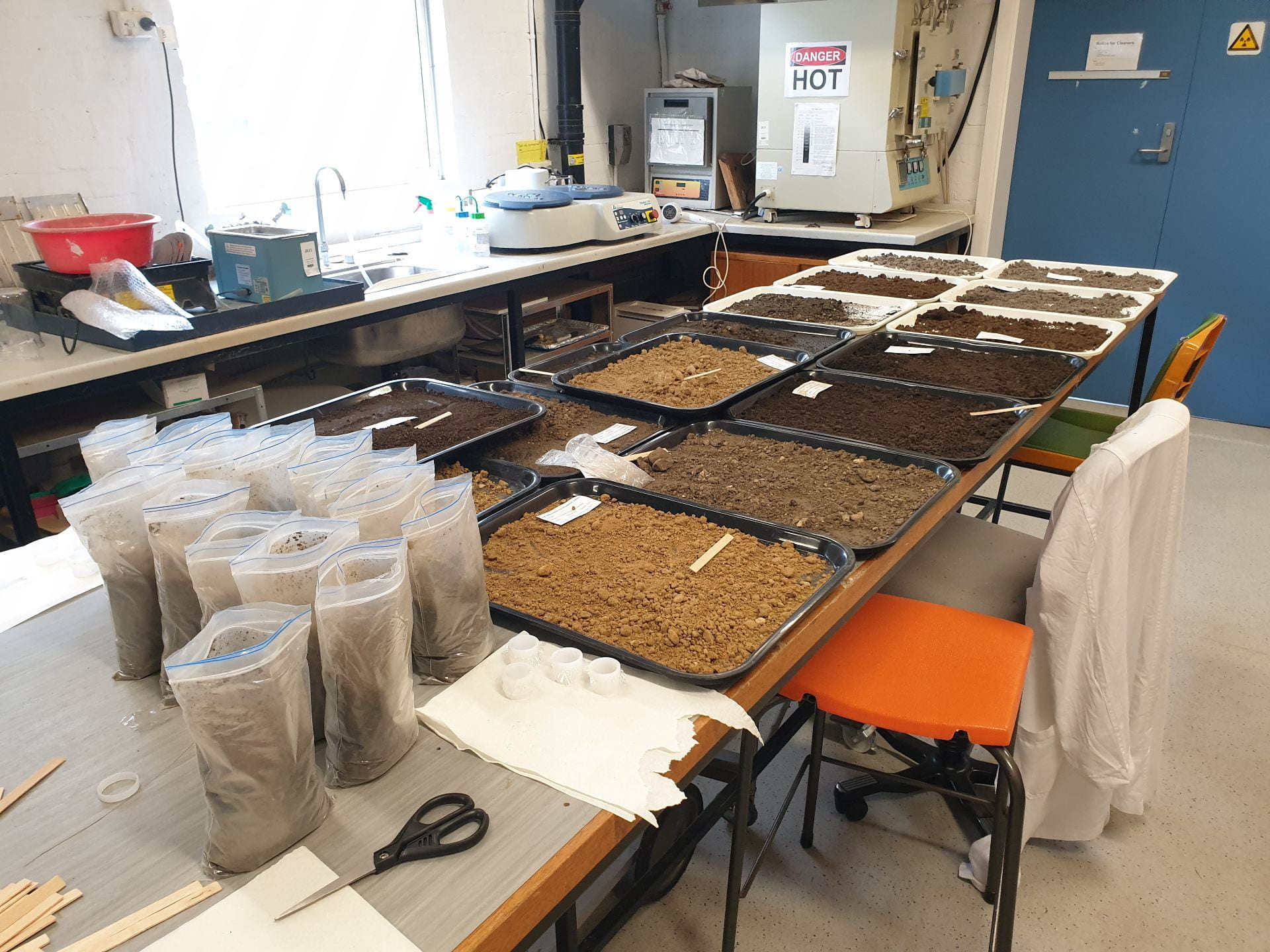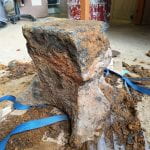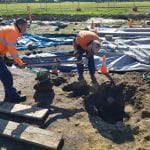Hello all! Just because this blog is seemingly dead, does not mean that work isn’t going on behind the scenes. With a year left on my postdoc project, I am madly trying to get the post-excavation stage of analysis completed. For those who are paying attention, this involves getting the actual site report written, the illustrations up to scratch and the dreaded artefacts done.
As part of this process I have recently been working in the UNE archaeological lab, under the careful tutelage of Prof Lloyd Weeks, Prof Martin Gibbs and Emma Watt. The purpose of this work has been to process the first tranche of soil samples from the excavation. We took about 90 samples from convict-period contexts, located according to a grid staked out across the foundry space. In the lab we’ve been applying archaeometallurgical methods of analysis to look at the extent and form of metals contained within the samples. To do this I took P-XRF readings of every sample. If you don’t know what this stands for, join the club. All I know is that it is a machine that literally goes ping and gives you a readout of the type and amount of elements contained within the soil. It’s pretty exciting as this type of analysis rarely gets conducted on Australian historic sites, so this project is leading the way in this form of analysis. Just the simple fact that you are reading this makes you just as important too.

The fun you can have in the lab
Early results have shown promising amounts of iron and copper within the samples, matching the historically-recorded use of these types of metals by the convict blacksmiths and foundrymen. ‘Big whoop’ I hear you say. I would tend to agree with you, as, if that was it, it would be just another archaeological excavation proving what we already knew from historical research. However, the exciting part in all this is that the results of the sample analysis can then be mapped back onto the site – remember, each sample was collected from a set part of a site grid. By mapping the different metal concentrations in this way, particular ‘hotspots’ of activity (such as around the location of furnaces or anvils) can be located. As we aren’t 100% sure where the working areas in the foundry were (for any phase of activity) this type of information will prove essential for understanding the site’s spatial patterning.
Sub-samples have also been processed to allow their magnetised metallic traces to be extracted. These will then be further analysed to determine their form and density. Examination of the metals under a microscope will help us determine if the traces were hammerscale from metal being worked at an anvil, or spalling from casting or other processes. Like the P-XRF results, these can be mapped back into the foundry space to help us reconstruct the spatial distribution of activity during the workshop’s phases of use. So, you know, that’s pretty cool too.
Work is also proceeding on the artefact analysis. UNE’s own Dr James Roberts conducted cataloguing and analysis of the recovered faunal remains. Former PhD student Dr E. Jeanne Harris has also just taken delivery of another part of the assemblage, undoubtedly ready to apply her formidable knowledge of the Port Arthur collection. Former student Julie Sebanc-Butler will also be conducting FTIR analysis of a number of brick samples, hopefully linking the results to her earlier work on the Port Arthur brickfields.
See, it’s all go. I told you so.



Really looking forward to seeing the outcomes of the report! Keeping my fingers crossed all continues to go well.
Thanks! It’s going to be a wonder of modern literature.
Dear Richard,
I imagine that one day we will be able to enjoy a virtual walking tour of the workshops with yourself as guide, and perhaps even catch a glimpse of those famous shillings being stashed!
Jonathan. Only if my voice is dubbed over by Benedict Cumberbatch and my virtual self is portrayed as an ethereal being.
Hello Richard,
This is so interesting! Also, exciting you are in Armidale. If you need any help in the lab there are heaps of Armidale Archaeology Padawans that would love to get involved. Good luck with the report!
I know! The town put on a parade and everything. Will let you know if/when I return and if I need help in the lab.
This is magic, I’m currently preparing a 45 minute presentation about Port Arthur and your “Dig” adds more intrigue to what’s an already intriguing tale.
Congratulations to you and your team on your efforts. I’m looking forward to your book.
Best wishes and kind regards
Tony van Maanenberg